Both the offline and the online worlds are getting more diverse and competitive nowadays. If you already have some experience in running a business in these worlds, you know that even a unique offer isn’t enough to win hearts of modern consumers. But even if you are an aspiring entrepreneur, full of enthusiasm and seemingly brilliant ideas, this bitter truth is never late to learn.
What’s more, your potential clients might not even care about the uniqueness of a particular product or service, or about that of a whole brand, if it isn’t introduced to them appropriately. And that’s when marketing comes into play! Proper introduction of your unique offer is its primary purpose. So, how can you make marketing serve it? You need a strategy. (Doesn’t it seem to you that all promising enterprises begin with this phrase?)
Since you’re going to compete on both the online and offline business battlefields (otherwise, your offer won’t survive), you need to arm yourself with a digital technology that can increase your chances to force the way through both contests into the target market.
This technology is Google Maps.

In 2018 this invaluable Google’s service helps us not only to blaze new trails across cities and countries and navigate through the streets when we simply get lost. (Yeah, that’s my real-life story.)
Today Google Maps has turned into a powerful marketing tool. Using it can bring lasting benefits to any business. So, what are the advantages of this application? What on earth can make it so versatile?
To give complete answers to these questions, we should look at the usefulness of Google Maps from a human and technological viewpoint.
So, Why Do People Like Maps?
The rules of this business game have changed in the 21st century: if you want to have more clients offline, you should first attract them online. And Google Maps is going to help you with it.
To understand how a map can help your business, remember what you like Google Maps for. When you search for stores or services nearby, you like to know their addresses, opening hours, or what other people think about them. That’s what your future clients want to know about you!
When writing this post, I was curious to find some statistics showing the attitudes of average consumers towards Google Maps. Interestingly, different sources provided very different percentage of netizens who conduct local searches before making a purchase.
Wishing to avoid any inaccuracies, I decided to cite the studies conducted by Google in cooperation with Ipsos MediaCT and Purchased in 2014. Here are a few thought-provoking numbers:
- 4 in 5 users prefer to find local information online before visiting the intended destination (local information mainly includes an address, business hours, directions, and product availability).
- 50% of consumers who conduct such local search on smartphones and 34% of consumers who use tablets or computers for this can visit the chosen store within one day.
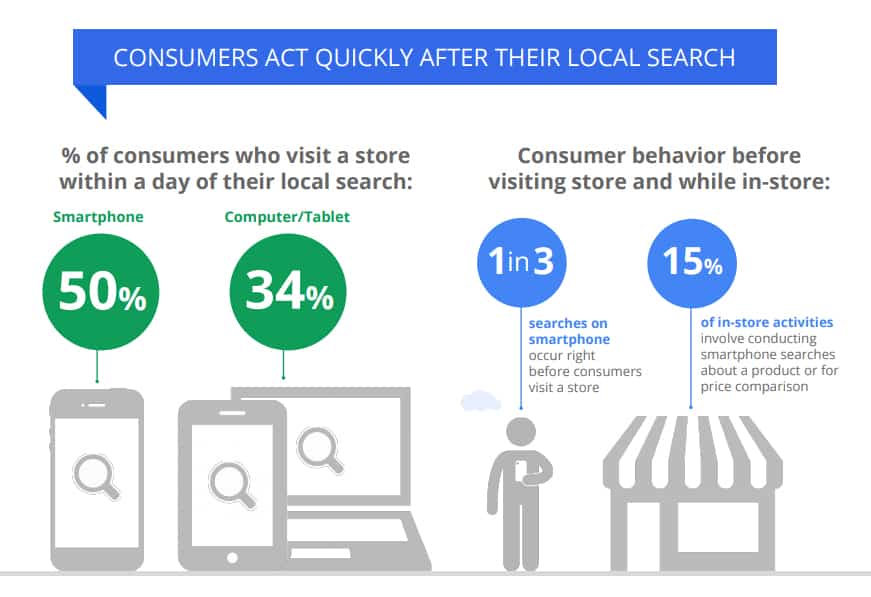
- More than 30% of consumers prefer to buy offline if they know they are close to a store and can get what they want quickly.
- 67% of smartphone and 72% of tablet/computer users prefer advertisements to be customized to their city and zip code, while 61% of smartphone and 70% of tablet/computer users want ads to be customized to their immediate whereabouts.
Although the survey is almost five years old and involved the strictly limited number of participants (4,500 people), aged 18 and older, its results appear more than eloquent even today.
So, if you use maps and provide local information to consumers, here is how they view your business:
- Impressive. Along with a marker on the map, you can (and should) provide a brief, catchy description of and some helpful information on your business. That does attract your attention when you are in consumer’s shoes, doesn’t that?
- Reputable. When netizens find the address of your business online, they naturally start considering it as real, tangible. And such attributes are essential to a good reputation in the commercial world.
- Available. To be precise, it means you help clients manage their time as they can check your business hours and plan their visit. This is how you show you care about their comfort.
- Easily navigated. Wherever your potential client is at the moment, Google Maps Directions will help them take the best route to your business.
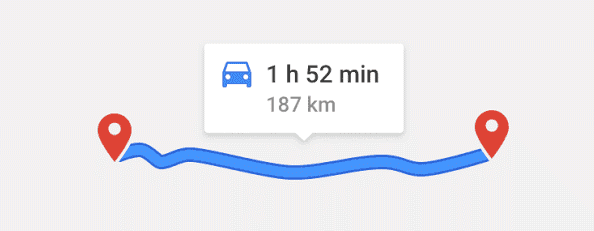
- Client oriented. When users search for the product or service you can offer them and make sure you are easy to find and convenient to contact, they are highly likely to opt for your offer and get the most of it as soon as possible. So, stay alert.
Fine, but Why Does Google Also Like Maps?
Not only because this service is a wonderful Google’s brainchild. Though this fact also weighs much. The following answers to this question directly clarify the technological viewpoint of the usefulness of Google Maps (I’ve mentioned it above). Plus, they highlight the significant role this application can play in the development of your marketing strategy.
Now let’s find out how Google Maps can be applied in marketing and how this service optimizes your business online.
What on Earth Is Google Maps Marketing?
You are right if you define this whole term as a process or way of using the functionality of Google Maps to help consumers find your business online and offline. A map adds visibility to it, ensuring users that it is real and welcoming.
How Can Google Maps Devise a Digital Marketing Strategy?
The prime objective of such strategy is the achievement of maximally high placement on the local listings on Google Maps results, depending on the keywords relevant to your business.
Yes, it actually should feel like Google Maps marketing is an element of search engine optimization, so don’t shoo this thought away. What’s more important, you should understand clearly what Google Maps listing is and whether it’s somehow connected with general Google ranking.
Let’s check the differences between the two Google Maps listings.
- Proximity-based results. This listing is based on your current physical location. Whenever you search for a bank or bike repair shop “near you” (Google prompts this while you are typing the request in the search bar), you can find the needed services marked with the letters on Google Maps. A indicates the nearest and most prominent of them.
- Ranked results. We can see them when our location data are disabled on our mobile devices for some reason. Imagine that you plan a trip to a town in the other part of your home country and want to find a good cafe there. There’s no need for Google Maps to show you “the nearest” cafes as they all are, say, about 500 miles away from you. So, instead, there are offered the ranking of cafes and restaurants in that area.
But where does this ranking come from? What influences it?
To find this out, check if your Google My Business (GMB) listing is optimized well.
What Do You Need to Know About Google My Business?
According to Google Support, this free tool allows businesses and organizations to manage online presence across Google. As a business owner, you can claim a Google My Business listing. Therefore, your business may appear in Google search results.
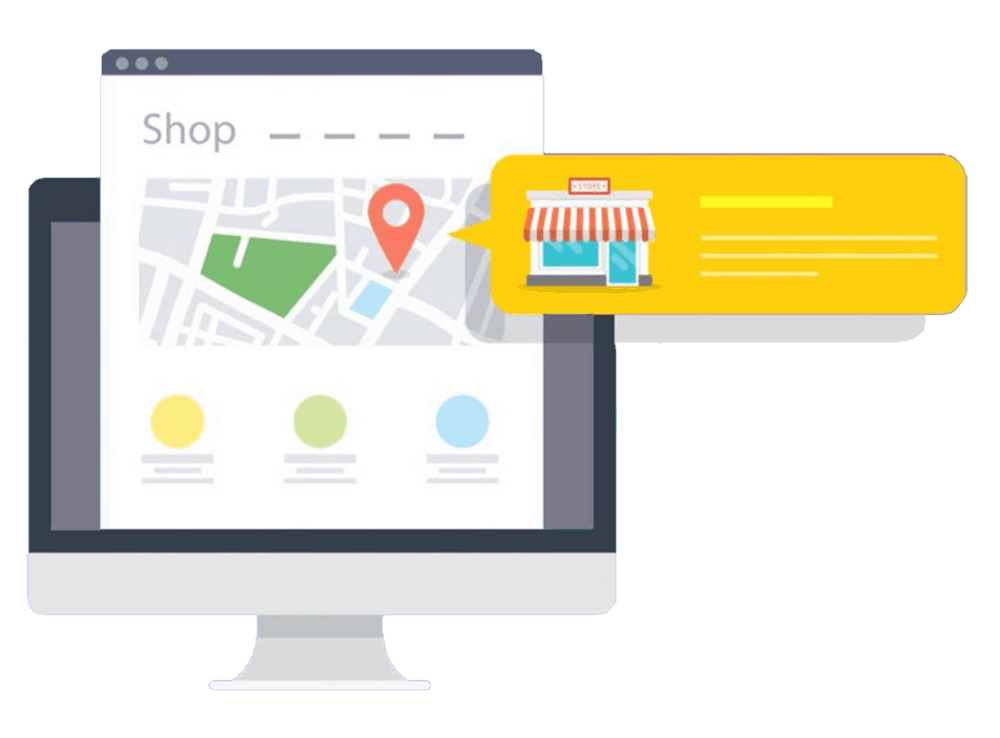
This listing should include the essential local information on your business – everything that clients need to find you, get in touch with you, and make a purchase or avail a service:
- Address
- Phone number
- Website
- Working hours
- Available products
- Types of payment
- Visitors’ or buyers’ reviews
- Etc.
What’s more, you can and should optimize Google My Business listing. MOZ has a few great solutions for that.
How Can You Make Google Maps Marketing Serve Your Business?
When people and Google like some technology, that’s a double reason for using this technology for achieving some of your mercenary goals. But personally, I don’t mind them. You can’t run any business if you don’t have these goals, can you?
So, what do you need to do to make your Google Maps listing maximally visible?
Provide the Correct Address
What could be easier? That’s what I think every time I come across a store or organization that provides a wrong physical address in Google. Still, I wonder how such enterprises manage to hold on online because Googlers generally don’t recommend giving false info, especially when it is supposed to be user and client oriented.
But if you want to be sure that your clients can find your business, you’d better make the address as detailed as possible. You’ll see Google will also like it.
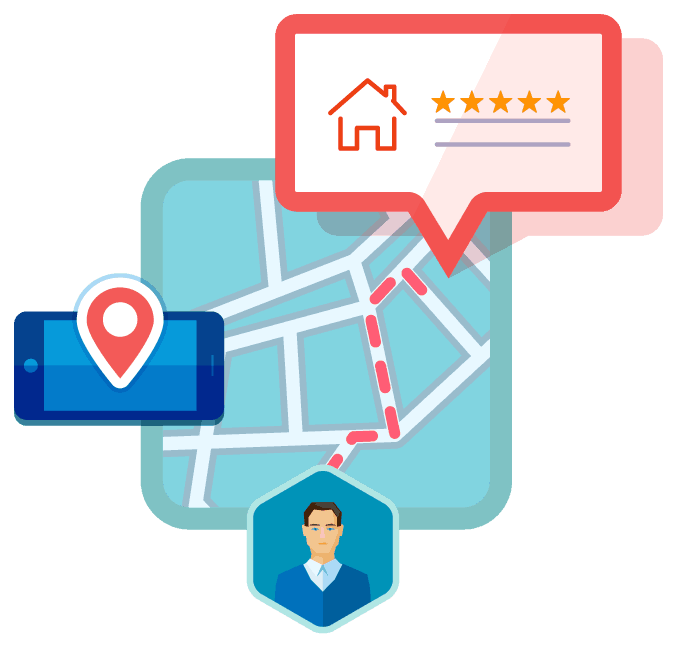
Specify the Service Area
This is essential if you have several offices around the town, if you sell products or provide services in other towns or countries, or you are a phone-only business. Make it clear for users that they can pay a visit not only to your company’s “headquarters” or that they can’t visit you at all.
Get the Verification of Your Google My Business Listing
Yes, Google must make sure your business is real and verify your listing, that is the local information you give to netizens. The whole process usually takes up to several weeks, so be ready to wait.
After Google’s approval, you’ll receive a postcard with a unique PIN to the physical address you indicated. Use it to confirm verification. Some businesses, however, can be verified via phone or e-mail.
Indicate All Possible Relevant Business Categories
To create a listing, you should indicate one primary business category, but don’t get yourself limited to it. Add more categories that can be relevant to your business.
The more details you provide, the more effectively your listing will be optimized. Besides, users certainly will like the variety of services you can offer. Still, I think there’s no need to highlight that you should be maximally honest with potential clients and, well, with Google the Great and Powerful.
Optimize Images
Not only do nice photos make your Google Maps profile more attractive and your business more inviting, but they can also contribute to optimization of your listing.
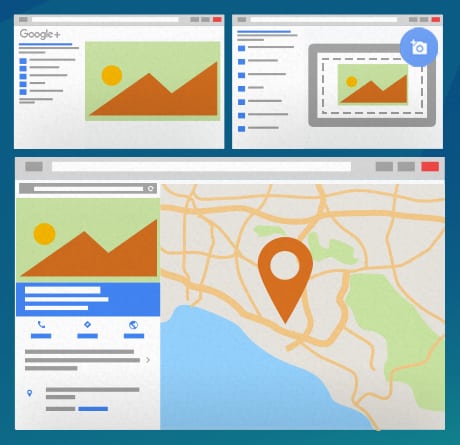
By adding metadata to images, you make them, and hence your business, easier to find. Such metadata can include:
- relevant keywords
- city or country tags (or full geographic location)
- physical address
- information on other categories if needed.
Write a Good Introduction
Consider it as a short advertisement. But don’t underestimate its importance in the ranking of your business. By the way, this is one of the most common mistakes business owners make.
You shouldn’t build the introduction (or it’s better to call it a description) on too general facts that make your business blend with the mass of your competitors. Also, it’s a bad idea to stuff such description with as many keywords as you can find. Imagine that you are a user who comes across a business like yours and think carefully what would attract you to find out more about it and visit it.
A few sentences of Google My Business Introduction can make you stand out, so make it compelling, informative, and bright. Also, add some keywords, but remember that they should look maximally natural in the text.
Add Buyers’ or Visitors’ Reviews and Local Citation
Although it’s not completely clear whether clients’ reviews have any impact on Google rankings or not, there’s no doubt that reviews do have an impact on users’ decisions.
Search Engine Land cites an interesting survey by BrightLocal, revealing that 88% of consumers trust online reviews, equating them to personal recommendations. Check the chart below:
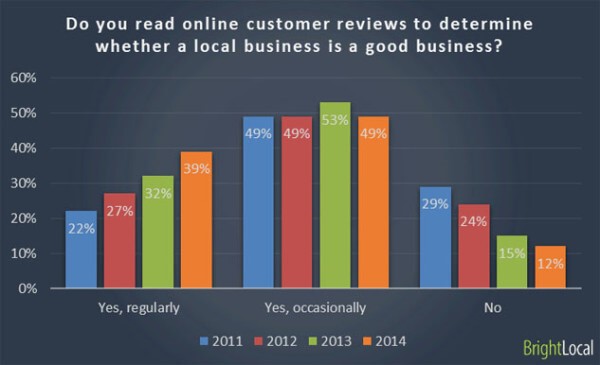
To monitor what real people say about your business and competitors, you can use special third-party tools, like Mention, and check reviews on Google, Yahoo Local, and Yelp.
Post on Social Media
This has been one of the most sustainable and powerful SEO trends in recent years.
So, if you want to rank higher on Google Maps, you should remind netizens about yourself regularly on Facebook, LinkedIn, Instagram, Google+, etc. Yes, that’s all about SMM, and you might need a good marketer to cope with it.
Posting on social media is no longer pure spamming. Unique content of your posts attracts users to learn more about what you are and why you are so original.

Build Safe Backlinks
High-quality backlinks to your website and other respectable sources that can verify the credibility of your business do miracles to your ranking on Google Maps. Additionally, using a local citation finder to secure citations from significant local business associations or other authorities can further enhance your credibility. That all will convince people and Google of the reputation and safety of your business.
Google Maps can turn into a useful tool for introducing your business to the offline and online worlds, as well as for optimizing it. Start enjoying its digital capabilities and getting the most of them today.